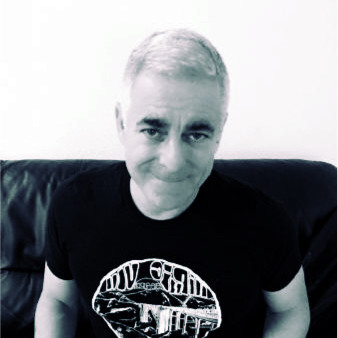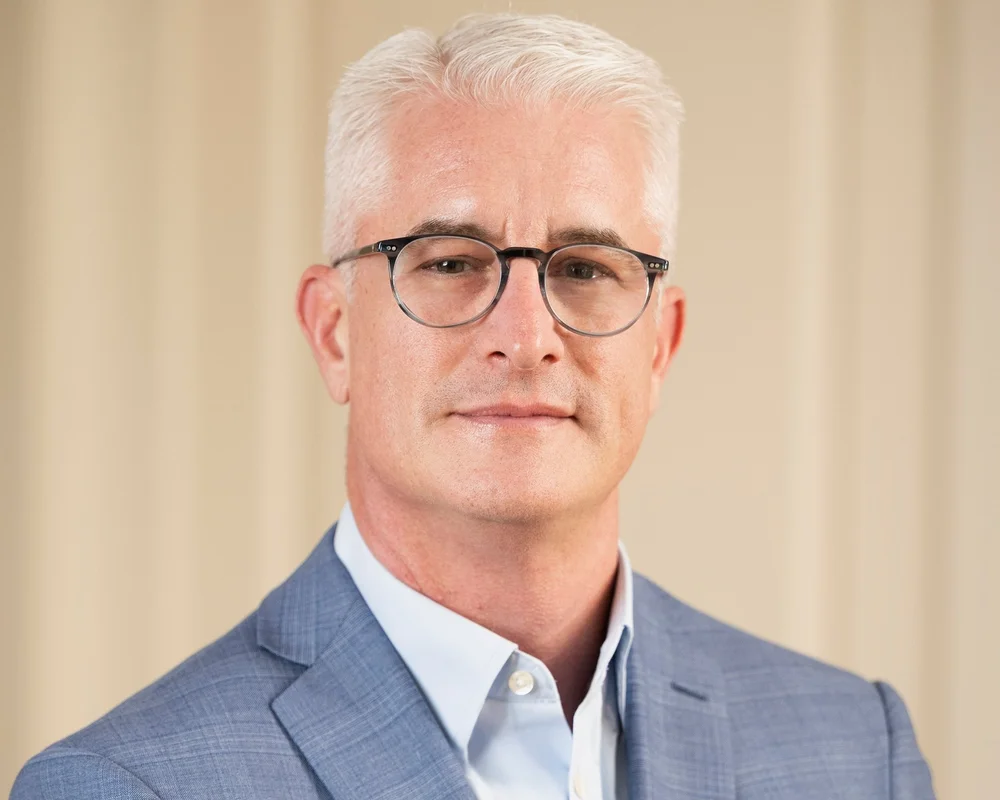 The data center business is not a monolithic collection of servers and power, there are many types of facilities out there making up the broader infrastructure ecosystem. One of the longest running but too often neglected in the AI era is that of the carrier hotel and interconnection hub. With us today is John Bonczek, CRO at 1547 Critical Systems Realty. Early on in 1547 CSR’s development we had the company’s CEO and Managing Director J. Todd Raymond here for a chat about their plans. Let’s find out what the company has been up to since.
The data center business is not a monolithic collection of servers and power, there are many types of facilities out there making up the broader infrastructure ecosystem. One of the longest running but too often neglected in the AI era is that of the carrier hotel and interconnection hub. With us today is John Bonczek, CRO at 1547 Critical Systems Realty. Early on in 1547 CSR’s development we had the company’s CEO and Managing Director J. Todd Raymond here for a chat about their plans. Let’s find out what the company has been up to since.
TR: How did 1547 Critical Systems Realty come to be what it is today, and how did you get involved?
JB: At 1547, we own and operate data centers and carrier hotels. Our focus really is more on core interconnection and carrier hotel-type buildings. I first met our CEO Todd Raymond at Telx when they were just a couple of years into operating an interconnection facility at 60 Hudson Street. At Telx, Todd was a co-founder, and I ran a sales engineering team and in later years focused primarily on sales and marketing. Todd, along with Corey Welp and Jerry Martin made 1547 happen with the development of the Orangeburg facility. Jerry and one of his partners on the construction side, Pat Hynes, were doing some diligence for an enterprise customer of theirs for a potential data center build. The facility was actually too large for the specifications they had from their tenant, but they were so impressed with it that they decided to seize the opportunity, purchase it, and build a company around it. I came in a few years later to help build our sales, marketing, and business development efforts.
TR: What kinds of opportunities does 1547 seek out?
JB: 1547 is primarily focused on urban properties, specifically heavily interconnected buildings, but we do a bit of everything. More specifically, we provide turnkey data center environments in our Orangeburg facility and lease out the infrastructure on a multiple-megawatt basis to more of the traditional enterprise colocation customers. Our tenants here are primarily in the financial sector, but we also have a retail colocation operator in this facility as one of our customers. While our thesis is focused on interconnection and carrier hotels, we are opportunistic. We are not just confined to a single type of build or single type of property. What differentiates us is the expertise that we’ve brought on from our construction roots, our interconnection roots, and our understanding of the importance of these properties. I like to compare our strategy to the Wayne Gretzky model in that we are skating to where we expect the puck to be.
TR: Where has that approach led you to so far?
JB: 1547 acquired some buildings in Tier 2 markets. Every market has that one building where the carriers are connecting to and through—whether the building’s ownership has operated it as a carrier hotel or whether the carriers came in and made it a carrier hotel by leasing space. We look at markets with potential and planned hyperscale development and look at interconnection properties in those markets. In fact, a few weeks ago we acquired such a facility: the Union Station Data Center in South Bend, Indiana.
We own the AlohaNAP data center, a carrier hotel-type facility in Hawaii, which also acts as a ground station for a lot of satellite services as well as the Pittock Block facility in downtown Portland, Oregon, which we acquired about three years ago. In Cheyenne, Wyoming we had a build-to-suit property where we own the property and the building and lease it to Lunavi (formerly Green House Data).
In addition to the South Bend facility that we recently acquired; we have a significant presence in the Midwest. About four years ago, we acquired the Wells Building, a carrier hotel facility in downtown Milwaukee with dense network connectivity. We also own two properties in Chicago: one was a former bakery with a significant amount of power and proximity of connectivity to it. The other building is 725 South Wells Street, which is one of the very well-connected properties in Chicago with great tethering back into 350 Cermak.
We also own the Chase Tower in McAllen, Texas, which is home to McAllen Data Centers. We see a lot of activity in that building, and we have some new border crossings that are going to be landing high-count fiber cable into our Meet-Me-Room there.
TR: What are your plans for the newly acquired Union Station Data Center in South Bend?
JB: Phase 1 of our expansion plans for the Union Station facility (SBIN1) include adding 4,890 sq. ft. and 600 kW of power. The work is beginning October 2024 and should be available by Q1 2026. Phase 2 includes an additional 1,000 kW of IT capacity, which is expected to be available by Q1 2028. Additional future expansion plans after Phase 1 and Phase 2 include an additional 2+ MW and a minimum expansion of 5,000 sq. ft.
TR: Do you find the market first and then look for the right kind of facility, or do you find the facility first and then evaluate the market?
JB: It’s a little bit of both. We talk very closely with our tenants about where there are gaps and where they might be struggling to find proper inventory. We can then go out and source the right building in those markets. We also look for connected properties in what we think will be hot markets because of the surrounding hyperscale development. We even reach out to get off-market conversations with owners and operators of these buildings. In some cases, they’re just real estate ownership and not owned by someone in the data center space, which can make for an interesting opportunity. We also monitor facilities that come up for sale. For instance, it’s no secret that 32 Avenue of the Americas is on the market, and that’s very interesting to us.
TR: In what parts of the country are you seeing the types of hyperscale development that interest you?
JB: There are some interesting things happening in the Midwest, and not just in Chicago and Wisconsin, but in a couple of other spots. We see a lot of development in Ohio, and I think there’s some opportunities in that market to develop or define an interconnection property. There are several developments in multiple Texas markets with a lot of players there. I wouldn’t necessarily want to go into Dallas and try to compete with Infomart, but there’s still significant things happening there. We hear of significant development in Atlanta, but we are not necessarily looking in this market. There is not a big opportunity to go in there and operate another building and try to compete with 56 Marietta. But if that were to ever come up for sale, it would be a lot of money, but it would be interesting.
TR: Where are you investing your resources in the next year or so? What projects are on the table?
JB: 1547 is working on additional expansion in Portland: we’re bringing on another 2 MW and planning for another two right behind that. We’re commissioning 4 MW in Orangeburg which will be ready in late Q4 2024 or early Q1 2025. We’ll be bringing on the first 2 MW at the Chase Tower early next year as well. In Hawaii, we’re looking to do a building extension that’s going to bring on a 1.5 MW addition and long-term planning for a 5 to 10 MW building on this property as well. AWS recently brought their Direct Connect node online in this building and we are getting a lot more attention and seeing more opportunities for growth there. Some are from hyperscalers looking to drop edge nodes in Hawaii, but the others are the on-island users of services like AWS looking to colocate with proximity to them.
When I talk about these expansions, 2 MW doesn’t sound like a lot, but these are network environments, not big data center environments. One of the interesting changes over the last 5-10 years is that some of the larger hyperscale companies have network requirements in the several hundred kW to a couple of MW just for a network hub, which is what we are building out to accommodate. So, while in the hyperscale data center world they are talking about GW now, a 2 MW or 4 MW build within these interconnection buildings is massive.
TR: What is driving that increase in the power requirements for the network type of space? Is that AI or is it just the growth in content traffic out there generally?
JB: I actually believe that we’ve barely scratched the surface of what AI is going to drive from a network perspective or a carrier hotel perspective. What we’re seeing is really driven by just traditional content creation and consumption. I think what you’re doing on your iPhones is still the primary driver of what is creating this additional need for large network hubs, but I also believe that some of it is in preparation for the next wave, which is going to be more of the AI applications that are going to drive more need for additional edge connectivity for low-latency applications.
TR: It does seem as if AI investment has been focused on space and power so far. Do you think that when AI applications take off, some of that AI investment focus may have to shift toward network interconnection?
JB: I just think it’s logical. The network is already there, and if we’re creating infrastructure where we can support their edge nodes, there’s no better place to put it. We’re expecting to see a wave of those types of requirements. I don’t know what they are going to look like,for example, whether it’s straight network hubs or if they’re going to need some compute environment to suit them as well. Because one of the challenges in an urban building is getting up to the types of densities that they’re running. You have to deal with water-cooled environments, which in a carrier hotel might be a challenge.
TR: Do you think that’s a path you guys might go down, or is it just hypothetical at this point?
JB: It’s a hypothetical at this point, but it will be demand driven. If an AI company comes in and says they’d like to set up an edge node within a network hub in a facility like ours with cabinets that are going to be running over 100 kW, then we will look to see how we can accommodate that—But we’ll see. There’s only so much you can really support in a carrier hotel from a power perspective. Ultimately, we’re using liquid to cool, anyway. We’re using primarily chilled water loops in our buildings that just feed into air handlers. So instead, you’d feed them into cooling distribution units that are going to pump water out to the customer’s environment so they can bring water to the chip.
TR: Are there any other technological areas you think might see demand drive new developments over the next few years?
JB: I think that’s really it. Twenty years ago, 2 kW per cabinet was the average of what you’d see in a data center environment. That gradually climbed to 10 to 15, and that’s still what we’ve seen on average in a lot of our deployments. For carrier hotels, it’s more like 8 to 12 on the high end, but now, it could be jumping up to 100. The only other real disruptive thing that I see on the horizon would be quantum.
TR: What would quantum mean to data center environments? So far it seems like just a buzzword representing the unknown.
JB: It really is, but there is effort being put in by several companies out there to develop it for more wide-scale applications. Currently, power demand and connectivity demand grow relatively steadily and are somewhat predictable. When you talk about quantum, the environment that you need to operate it, with temperatures at absolute zero and at specified seismic rating, there are environments out there that are being built specifically for them. However, nobody in the data center world is speculatively building data centers to these specifications. Once you get down to it, what could be done in a very small space is going to be hundreds if not thousands of times more powerful than the compute capacity of today’s GPUs. That’s a potential disruptor in the long term.
TR: Short of quantum, what challenges do you see 1547’s niche in the industry facing in the years ahead?
JB: We always seem to face the same challenge: getting the right amount of power into a building that is already the core interconnection facility. Buildings like that are finite in size, so what happens when they’re full? Then the challenges are to find adjacent structures that can build on the functionality of the existing building. I firmly believe that the carrier hotel doesn’t get talked about a lot, but it has always remained critically important. We see it firsthand because they haven’t slowed down. Connectivity and network presence from carriers and content providers alike are growing, and I think with continued growth of the hyperscalers from both their traditional content business and from AI, they are going to become that much more important. We will probably start to see them running into physical space and power capacity limitations and that’s a good problem for us to have. We want to be able to face that problem. It’s always been part of our plan. I just think it’s going to come sooner than a lot of people anticipated.
TR: Thank you for talking with Telecom Ramblings!
New information
If you haven't already, please take our Reader Survey! Just 3 questions to help us better understand who is reading Telecom Ramblings so we can serve you better!
Categories: Datacenter · Industry Spotlight · Interconnection






Discuss this Post